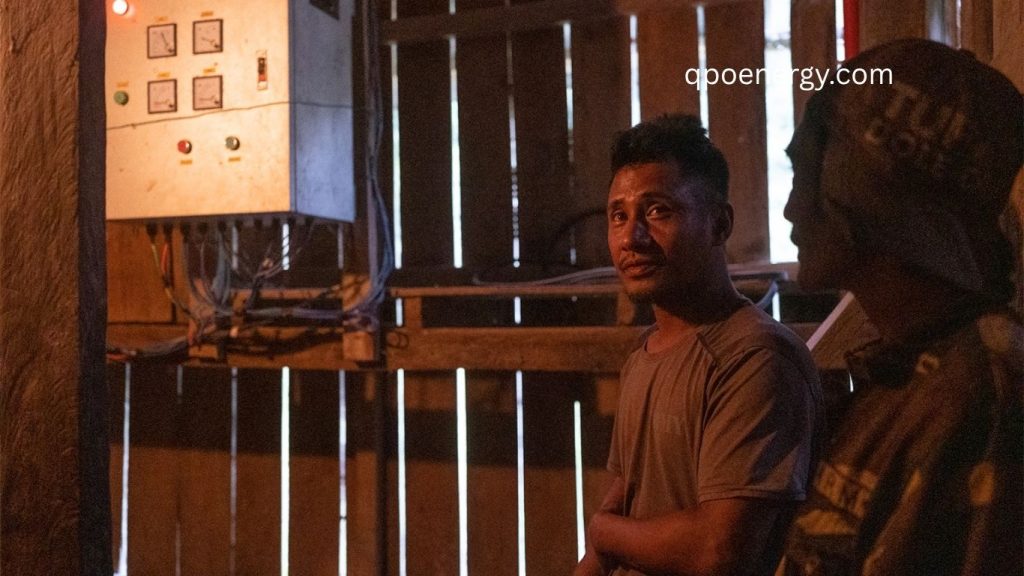Micro-Hydro Solutions____When 52-year-old Juliana Balweg-Baawa first switched on a light in her home, she leaped with joy. “My children can study at night!” she exclaimed.
For Juliana, a resident of Mataragan, a remote village nestled in the Cordillera mountains of northern Philippines, electricity was more than convenience—it was life-changing. Before 2003, her family relied on the dim glow of a kerosene lamp. Studying was difficult, housework was slow, and food spoiled quickly. Once electricity arrived, she bought a refrigerator, started selling frozen meat and cold drinks, and made rice processing easier with electric grinders.
“Life is still hard up here,” she admitted, “but at least now, we don’t have to pound rice by hand, and my children had light to study.”
Juliana’s story reflects a broader challenge across the Philippines, where nearly 3.6 million households remain off-grid, according to the Department of Energy. Most of these families live in rugged, rural, and Indigenous communities. Despite the odds, villages like Mataragan have found solutions—through micro-hydro generators built by their own hands, with help from non-government groups.
Lighting the Cordillera: Community Power in Action
Today, Mataragan runs two micro-hydro generators—one powers homes while the other pumps irrigation water and drives rice grinders. Unlike large-scale hydropower dams that often displace communities, these small systems supply clean, round-the-clock electricity with minimal ecological disruption.
In neighboring Pangued, residents remember when their micro-hydro project began two decades ago. Bubot Bagwan, then a young man, joined his neighbors on a week-long trek, carrying cement, iron, and machine parts on their backs and horses through steep slopes and rivers.
“The micro-hydro arrived before any road or car did,” Bagwan recalled. Pangued, home to fewer than 100 households, still lacks fully paved roads. Yet, every home now has light, thanks to a system built entirely through bayanihan—the Filipino tradition of collective community effort.
At night, Bagwan said, the glow of electric lights across the mountainside looks like fireflies resting together, a symbol of what unity can achieve.

Government Goals vs. Local Realities
The Philippine government has set a target of 100% electrification by 2028. However, many remote areas, especially in the Cordilleras, remain too isolated for the national grid. Connecting them would require massive infrastructure investment, which electric cooperatives—non-profit entities—say is not financially viable.
For such communities, the National Electrification Administration (NEA) promotes solar home systems. But underfunding remains a major obstacle. Although the NEA requested ₱69 billion (about $1.2 billion) over five years to support renewable initiatives, it receives less than ₱2 billion annually.
Ernesto Silvano Jr., NEA’s deputy administrator, admitted: “We’ll make do. But demand keeps growing with the population, and our plants can’t always keep up.”
This funding gap underscores why micro-hydro systems and other community-led initiatives have become essential lifelines for far-flung villages.

The Role of NGOs: Powering Progress with SIBAT
At the forefront of these grassroots electrification efforts is Sibol ng Agham at Teknolohiya (SIBAT), or Wellspring of Science and Technology. For over two decades, SIBAT has supported Indigenous communities by providing engineering expertise and limited funding for micro-hydro projects.
“The Cordillera is perfect for micro-hydro,” said SIBAT director Estrella Catarata. “It has abundant rivers, watersheds, and many off-grid villages.”
So far, SIBAT has helped establish 22 micro-hydro systems, 13 of them in Abra province alone. Each generator typically powers around 100 households. Construction and maintenance remain community-led, ensuring residents take ownership and responsibility.
For people like Johnson Dalingay, president of Mataragan’s village cooperative, the benefits go beyond electricity. Micro-hydro is cheaper, safer, and aligned with Indigenous values of self-sufficiency. Residents pay only 5 to 7 pesos per kilowatt-hour, compared to nearly 18 pesos for those connected to Abra’s electric cooperative.
“We don’t want dams or big power plants,” Dalingay explained. “They would flood our fields and homes. Micro-hydro gives us control and doesn’t force us to leave our land.”
Small-Scale Power, Big Impact
Micro-hydro systems offer more than affordability—they’re eco-friendly, low-carbon, and sustainable. Unlike large hydroelectric dams, they require only small diversions of water, often through a meter-high weir, minimizing damage to ecosystems.
Engineer Jey Mart Erasquin, a micro-hydro expert, argues that decentralized renewable systems are the smarter choice:
“I wouldn’t recommend connecting to the grid. It incurs high costs and energy losses. Small, community-based systems are enough for households and schools, without the environmental damage of big dams or nuclear plants.”
Communities have also started experimenting with hydro-solar hybrid systems to adapt to seasonal changes in water flow. Engineers are designing electronic load controllers that balance electricity supply across expanding households.
These innovations show how micro-hydro can evolve alongside growing demand, without losing its grassroots spirit.
Challenges on the Ground
Despite their promise, micro-hydro initiatives face serious obstacles. SIBAT and its partner communities have often clashed with the military, particularly during the COVID-19 pandemic. Soldiers set up checkpoints that blocked NGO workers and engineers from reaching project sites.
Catarata recounted being interrogated and accused of aiding insurgents, a practice known as red-tagging, which has long plagued Philippine NGOs. By 2025, 69 workers from 21 organizations—including SIBAT—faced terrorism charges.
“The military intimidated our engineers, confiscated their belongings, and even forced some to quit,” Catarata said. Entire projects were frozen, leaving villages without support for maintenance.
Former Malibcong mayor Romando Bacuyag admitted he had to personally negotiate with provincial authorities to allow SIBAT back in. “The military suspected them. But we had no other way to give electricity to our people,” he said.
These conflicts highlight how politics and security issues complicate development efforts, even when communities clearly benefit.
The Future of Energy in Remote Villages
While the government insists that long-term economic growth requires grid connection, many Indigenous leaders and engineers disagree. They argue that community-managed renewable systems are more practical, affordable, and respectful of local traditions.
Still, challenges remain. Many energy cooperatives are locked into long-term fossil fuel contracts, slowing the transition to renewables. Budget shortfalls and bureaucratic hurdles further delay projects.
Yet, despite these challenges, Indigenous communities in the Cordilleras continue to show resilience. In Pangued, Bagwan now leads weekly maintenance teams that clean and repair their generator. For him, the unpaid labor is simply another form of farming—done for the common good.
“We’re learning to repair turbines ourselves,” he said proudly. “This is bayanihan. Just like tending rice fields, we build and care for our generator together.”

Frequently Asked Questions:
What is a micro-hydro power system?
A micro-hydro system uses flowing water, such as streams or rivers, to generate electricity on a small scale. It is ideal for rural or off-grid communities.
How do micro-hydro projects benefit Indigenous villages in the Philippines?
They provide affordable, round-the-clock electricity for households, schools, and small businesses. Communities gain improved education, health, and income opportunities without relying on costly grid connections.
Why is micro-hydro better than large dams for remote areas?
Unlike big dams, micro-hydro projects have minimal environmental impact, require smaller infrastructure, and do not displace communities or flood farmland.
Who supports micro-hydro development in the Philippines?
Non-government organizations like SIBAT (Sibol ng Agham at Teknolohiya) provide technical expertise and funding, while Indigenous communities handle construction and management.
What challenges do micro-hydro projects face?
Common challenges include limited funding, political interference, military restrictions, and occasional technical difficulties that require expert maintenance.
How much does electricity from micro-hydro cost compared to grid power?
Communities typically pay 5–7 pesos per kilowatt-hour, much lower than the up to 17.6 pesos charged by grid cooperatives in Abra province.
Can micro-hydro be combined with other renewable energy sources?
Yes. Engineers are developing hydro-solar hybrid systems to ensure consistent electricity supply throughout the year, even during dry seasons.
Conclusion
The rise of micro-hydro systems in the Cordillera mountains is more than an energy solution—it is a story of resilience, empowerment, and self-reliance. For Indigenous communities long excluded from the national grid, micro-hydro projects bring light to homes, opportunities for education, and new livelihoods. Beyond electricity, they preserve cultural traditions, protect the environment, and prove that sustainable progress can be achieved through unity and innovation. As the Philippines works toward full electrification, these community-driven initiatives serve as a powerful reminder: true development shines brightest when it is inclusive, sustainable, and rooted in the hands of the people themselves.


